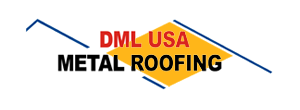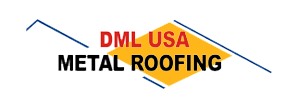Metal roof end caps are essential accessories for sealing and protecting the edges of your roof panels. These components play a crucial role in enhancing the overall durability and aesthetics of your roofing system.
Here’s why metal roof end caps are important:
- Seal and Protect: End caps prevent water, debris, and pests from compromising the integrity of your roof by sealing off open edges.
- Durability: Crafted from sturdy materials, they stand up to harsh weather conditions and have a long lifespan.
- Aesthetic Appeal: With various colors and styles available, end caps contribute to a polished, finished look that complements any architectural style.
End caps can transform your roof from a mere covering to a long-lasting and visually appealing shield.
As someone deeply immersed in the roofing industry, I am Adam Kadziola. From extensive experience at DML USA Metal Roofing, I understand what homeowners like you seek in metal roof end caps. With years in manufacturing, I am here to guide you through selecting the right accessories for longevity and value.

Understanding Metal Roof End Caps
When it comes to metal roof end caps, understanding the role of sealants is crucial. Sealants ensure a watertight fit, preventing leaks and maintaining the roof’s integrity. Here’s a breakdown of the types of sealants and materials used in metal roofing:
Types of Sealants
Tapes: Sealant tapes are popular for their ease of use. They provide a straightforward application process, making them ideal for DIY projects. These tapes are often made from high-quality butyl polymers, which offer excellent adhesion and flexibility.
Gun-Grade Sealants: These are applied using a caulking gun, providing a precise and controlled application. Gun-grade sealants are perfect for filling gaps and ensuring a strong bond between the metal roof end caps and the roof panels.
Butyl Polymers: Known for their durability and water-resistant properties, butyl polymer sealants are a top choice for metal roof applications. They maintain their flexibility over time, even in extreme temperatures, ensuring that the end caps remain securely sealed.

Why Sealants Matter
Sealants not only keep water out but also help in reducing noise and vibration. This is particularly important for metal roofs, which can be noisy during heavy rain or hail. A well-sealed roof provides a quieter and more comfortable environment inside the building.
The Role of Butyl Polymers
Butyl polymers are the backbone of many roofing sealants due to their unique properties. They remain pliable, allowing them to expand and contract with the roof’s natural movements without losing adhesion. This flexibility is vital for maintaining a long-lasting seal.
In summary, choosing the right sealant for your metal roof end caps is essential for ensuring durability and performance. Whether you opt for tapes or gun-grade sealants, ensure they are made from high-quality materials like butyl polymers to get the best results.
Next, let’s explore the different types of metal roof end caps available and how they can improve your roofing system.
Types of Metal Roof End Caps
Choosing the right type of metal roof end caps is crucial for the performance and aesthetic of your roof. Here’s a closer look at the main types available:
Trapezoidal End Caps
Trapezoidal end caps are designed to fit the ends of trapezoidal roof panels. These end caps are versatile, making them suitable for various applications like metal curbs and skylights. Their flexible design allows for easy installation, ensuring a snug fit that seals off the roof ends effectively.
- Applications: Ideal for metal curbs, skylights, and ridge applications.
- Features: Flexible and durable, designed to withstand harsh weather conditions.
Ridge Caps
Ridge caps are essential for covering the ridge line of the roof, where two sloping sides meet. These caps play a vital role in preventing water from entering the roof at its highest point. They also add a finished look to the roof, enhancing its overall appearance.
- Purpose: Protects the roof’s ridge line from water infiltration.
- Installation: Often requires tools like snips and hand seamers to ensure a tight fit.
Gable End Caps
Gable end caps are used at the gable ends of a roof, where the roof meets the walls. These caps help in sealing the ends and provide a neat finish, preventing water and debris from entering the roof space.
- Function: Seals and protects the gable ends of the roof.
- Design: Complements the roof’s structure and improves its aesthetic appeal.
Each type of end cap serves a specific purpose and is designed to address different areas of the roof. Selecting the right end cap is crucial for ensuring the longevity and efficiency of your roofing system. Whether it’s the flexibility of trapezoidal end caps or the protective nature of ridge caps, choosing the right type is key to a successful roofing project.
How to Install Metal Roof End Caps
Installing metal roof end caps properly is essential to ensure your roof’s longevity and protection. Here’s a straightforward guide to help you get it right.
Tools You’ll Need
- Snips: These are crucial for cutting metal end caps to the desired size and shape.
- Hand Seamer: This tool helps in bending and folding the metal to fit snugly against the roof.
- Ridge Cap: Used to cover the ridge line where two sloping sides meet.
Step-by-Step Installation Guide
Measure and Cut: Use snips to cut the metal end caps to the required length. Precision is key here to ensure a perfect fit.
Position the End Cap: Place the end cap at the edge of the roof panel, ensuring it aligns correctly with the roof’s profile.
Fold and Secure: Use a hand seamer to fold the edges of the end cap. This creates a secure fit that prevents water infiltration. Folding also gives a clean, finished look.
Install the Ridge Cap: If you’re working on the ridge line, position the ridge cap over the seam where two roof planes meet. This is crucial for preventing water from seeping in at the highest point of the roof.
Secure with Screws: Fasten the end caps and ridge cap using appropriate screws. Make sure they are tight enough to hold the caps in place but not too tight to damage the metal.
Seal the Edges: Use a suitable sealant to seal the edges and seams. This extra step adds an additional layer of protection against water and debris.
Pro Tips
- Check Alignment: Always double-check the alignment before securing the caps. Misaligned caps can lead to leaks and other issues.
- Use Quality Sealants: Opt for high-quality sealants that are specifically designed for metal roofs. This ensures long-lasting protection.
By following these steps, you’ll ensure that your metal roof end caps are installed correctly, providing both aesthetic appeal and functional protection. Proper installation is vital for maximizing the lifespan and performance of your roofing system.
Benefits of Using Metal Roof End Caps
When it comes to protecting your metal roof, metal roof end caps are essential. They offer several benefits that improve the durability and performance of your roofing system. Let’s explore some key advantages.
Durability
One of the standout features of metal roof end caps is their durability. These end caps are designed to withstand harsh weather conditions, including high winds and heavy snow. DML USA Metal Roofs, for instance, boast a wind resistance of up to 120 mph, ensuring that your roof remains intact during severe storms. Moreover, the Kynar 500® paint coating used in DML USA Metal Roofs prevents chipping and fading, maintaining the roof’s appearance for decades. This durability translates to fewer repairs and lower maintenance costs over time.
UV Protection
Another significant benefit of using metal roof end caps is their UV protection. Metal roofs, especially those with reflective coatings, can reduce urban air temperatures by as much as 12°F. This not only helps in lowering your home’s cooling costs by up to 40% during summer but also contributes to improving the overall air quality in your neighborhood. By reflecting the sun’s rays, metal roof end caps prevent damage from UV exposure, which can cause other roofing materials to degrade over time.
Flexible Width
Metal roof end caps come in various designs, including trapezoidal, ridge cap, and gable end caps, offering flexible width options to suit different roof profiles. This flexibility ensures that you can find the perfect fit for your specific roofing needs. Properly fitted end caps are crucial for sealing the ends of trapezoidal roof panels, preventing water infiltration and enhancing the roof’s overall performance.
By choosing the right metal roof end caps, you not only protect your home but also contribute to a more sustainable environment. With benefits like durability, UV protection, and flexible width, these end caps are an investment that pays off in the long run.
Frequently Asked Questions about Metal Roof End Caps
How do you seal the ends of a metal roof?
Sealing the ends of a metal roof is crucial for preventing leaks and ensuring long-lasting protection. Ridge caps play a vital role in this process. They cover the peak of the roof, sealing the junction where two roof slopes meet. To install a ridge cap effectively, you can use a hand seamer to bend and secure the metal, creating a tight seal that keeps out water and debris.

What are the types of sealants used for metal roofs?
When it comes to sealing metal roofs, choosing the right sealant can make all the difference. Here are some common types:
- Tapes: These are often used for quick fixes and can be applied easily to small gaps or seams.
- Gun-grade sealants: Applied with a caulking gun, these are ideal for larger areas and provide a strong, lasting bond.
- Butyl polymers: Known for their excellent adhesion and flexibility, butyl polymers are perfect for metal roofs as they can withstand temperature fluctuations without cracking.
Each type of sealant has its own benefits, so select one that best suits your specific roofing needs.
What is the lifespan of metal roof end caps?
The lifespan of metal roof end caps can be quite impressive, often lasting up to 30 years or more. This longevity is due in part to their robust construction and resistance to environmental factors. Additionally, the UV protection offered by these end caps helps prevent sun damage, ensuring they remain effective for decades. This means fewer replacements and repairs, saving you time and money in the long run.
By understanding how to seal metal roof ends, choosing the right sealants, and knowing the lifespan of end caps, you can ensure your metal roof remains in top condition for many years. Up next, we’ll explore more about the installation process and best practices for maintaining your metal roof.
Conclusion
Choosing the right metal roof end caps is key to ensuring the longevity and performance of your roofing system. At DML USA Metal Roofing, we pride ourselves on manufacturing high-quality and affordable metal roofing products that meet the highest standards of durability and performance.
Our metal roofing solutions are not only built to last but also come with added benefits like energy tax credits. This makes our products not just a smart choice for your home, but also a financially savvy one. Our roofing systems are designed to withstand harsh weather conditions, offering high resistance to fire, wind, and impact, which is crucial for areas prone to extreme weather.
By investing in our metal roofing products, you are choosing a maintenance-free solution that provides peace of mind. Plus, with the potential for energy savings and lower insurance premiums, our roofing systems offer long-term economic benefits.
For more information on our products and how they can benefit your home, visit our product page.
Thank you for considering DML USA Metal Roofing for your roofing needs. We are committed to providing you with the best products and services to protect your home and improve its value.

